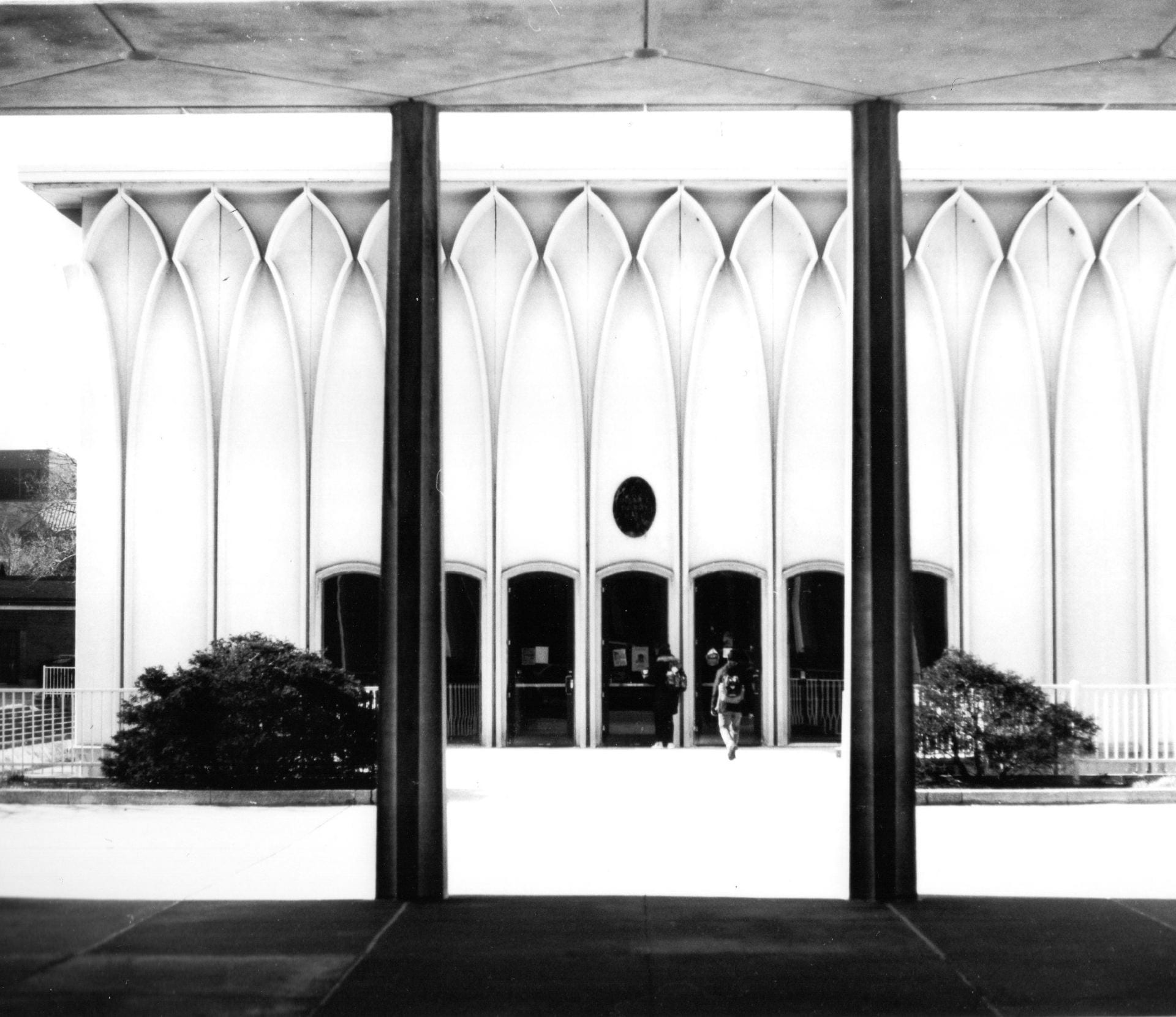Introducing P30

I took this picture of DeRoy Auditorium with an old Yashica camera that belonged to my partner Ed’s grandfather. I’m pretty sure it’s older than I am. I developed and printed the roll in a friend’s darkroom, and if you look closely you can see grains and a tiny scratch near the middle. It’s the first roll of real film I’ve shot in years, and the first time I’ve been in a darkroom since photojournalism class in high school.
The film I used was Ferrania P30. I’m currently working on a research project about Ferrania, an Italian company that made filmstock for movies, photography, and x-rays for nearly 100 years. Analog is the film that lives in spools carefully engineered to keep light out, since it’s “photosensitive”: it reacts to light. The “sensitive” part here interests me too: filmstock reacts to all kinds of things, in fact, from human touch to radioactivity to temperature and air, as if it’s a living being (#filmisalive! it’s a hashtag and a theory underlying my project). The original Ferrania factory closed in the early 2000s (like lots of other film producers) but now, with new owners and a massively scaled-down business plan, Ferrania is starting to make black and white film again. It was immeasurably exciting to see the qualities I’d been reading about that make Ferrania special – the dramatic contrasts, the deep grays, the high silver content – come to light.
An analog moment?
Right now, as I work from home during the pandemic, I’m thinking a lot about the “analog” part of the project. As I was getting started on my project, one of the first things I read about Ferrania was in a book by David Sax titled The Revenge of Analog: Real Things and Why They Matter. Sax explores the recent popularity of vinyl records (hello Third Man!), paper products, board games, and typewriters, ultimately arguing that the best ideas emerge from physical contact with the messiness of the world. Ferrania’s new owners are betting that there’s a small but stable market for filmstock. There are certainly a number of filmmakers who prefer analog to digital. In Hollywood, Quentin Tarantino, Christopher Nolan, JJ Abrams shoot on analog. In Italy, Pietro Marcello and Alice Rohrwacher find it suits their innovative and quirky artistic styles best.
Suddenly, though, COVID-19 has swept across the globe, hitting both northern Italy (near where Ferrania is located) and Michigan quite hard. We are shut inside and reminded not to TOUCH anything (ESPECIALLY our faces, ack!), and things have gotten considerably messier. Now, touching things – contact – is laced with a (justifiable) fear of contagion. So how virtuous is the virtual? And how inevitable? How much of life will move permanently to Skype, Youtube, WhatsApp, Zoom?

My work in the environmental humanities and my commitment to experiential learning, especially on location with our study abroad program in Abruzzo, Italy, convinces me that contact is crucial. In terms of environmental film and media culture, one reason is that contact keeps us from forgetting that, no matter how ephemeral something might seem – cloud computing, virtual life – there are always real, tangible resources (metals, minerals) and real laborers (miners, factory workers, recyclers) on the line. Virtual is always material somewhere along the production and distribution chains. No media production is without environmental impact, so when we factor in things like obsolescence, storage, the quantity of things we produce and consume, the energy costs of streaming media, what are the actual differences between analog and digital production?
I’m totally grateful for virtual meetings and classrooms and happy hours while virus containment measures are underway. But I guess I’m wondering how we might use some of our quarantine time to ask ourselves how – and how much – our lives should be mediated. And I’m wondering what happens to the passion for analog once it’s safe to get back out there? Will COVID-19 make us double down on our digital lives, or will it give us a new appreciation for things we can hold in our (clean) hands? Maybe new patience for things that don’t deliver instant results?
And closer to my intellectual home, what will all of this mean for Ferrania? The new Ferrania has chosen to close during Italy’s strict shutdown to take care of their employees, although they weren’t required to by the government. They are a small start-up, and like many small businesses, they’ll no doubt face major challenges as the Italian economy contracts.
I’m rooting for them. I still have so much to learn about filmstock, and thinking (slowly) with analog is just my speed.

